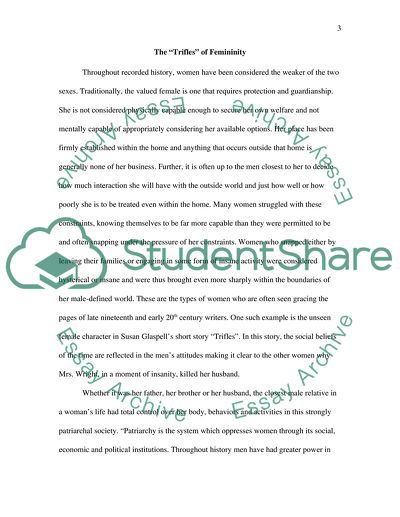Cite this document
(The Trifles of Femininity Research Paper Example | Topics and Well Written Essays - 1000 words, n.d.)
The Trifles of Femininity Research Paper Example | Topics and Well Written Essays - 1000 words. Retrieved from https://studentshare.org/gender-sexual-studies/1745937-trifles-by-susan-glaspell-feminism
The Trifles of Femininity Research Paper Example | Topics and Well Written Essays - 1000 words. Retrieved from https://studentshare.org/gender-sexual-studies/1745937-trifles-by-susan-glaspell-feminism
(The Trifles of Femininity Research Paper Example | Topics and Well Written Essays - 1000 Words)
The Trifles of Femininity Research Paper Example | Topics and Well Written Essays - 1000 Words. https://studentshare.org/gender-sexual-studies/1745937-trifles-by-susan-glaspell-feminism.
The Trifles of Femininity Research Paper Example | Topics and Well Written Essays - 1000 Words. https://studentshare.org/gender-sexual-studies/1745937-trifles-by-susan-glaspell-feminism.
“The Trifles of Femininity Research Paper Example | Topics and Well Written Essays - 1000 Words”, n.d. https://studentshare.org/gender-sexual-studies/1745937-trifles-by-susan-glaspell-feminism.


